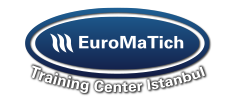Overview:
Introduction
It can be said that developing governmental or private institutions, improving performance, and developing human resources capabilities are among the primary goals institutions seek through planned and deliberate change. Globalization, total quality, balanced performance, team building, attention to creativity, excellence, and changing customer desires, and there is a challenge related to maintaining consistency between organizational dimensions such as organizational culture, organizational climate, strategic planning, renewable technology, and the information and knowledge revolution. Institutions will not be able to meet these challenges except through their distinguished human resources. And the creative woman who can lead our Arab organizations and institutions to change, innovation, development, leadership, excellence, excellence, and standing in the first ranks.
Course Objectives
At the end of this course the participants will be able to:
- To develop an understanding of human resources development and personnel management practices
- To develop an awareness of the advantages of effective human resource management
- To develop an awareness of key HR and HRD strategies for improving organizational success
- To understand the application of strategic human resources development and personnel management practices in the workplace
- To effectively apply appropriate practices to specific workplace situations
Targeted Audience
- Managers and heads of human resources and personnel departments.
- Employees of departments and departments of human resources and personnel affairs.
- Employees and managers of departments and departments of the organization.
- Interviews and recruitment committees.
- Anyone who finds himself in need of this course and wants to develop his skills and experience.
Course Outline
Unit 1: Manpower Planning Stages.
- Who plans for human resources?
- Means of attracting the workforce that is characterized by creativity.
- The stock of skills and methods of forecasting human resources.
- Human resource planning difficulties and how to confront them.
- The pillars upon which human resource managers depend to achieve career excellence and creativity.
- Determining the creative and distinguished traits that organizations need in their work.
- Principles and scientific foundations for human resource management.
Unit 2: For Selection and Employment:
- Selection and recruitment system.
- Scientific steps for the selection and recruitment process.
- Conducting psychological, practical, and written examinations.
- Interviewing skills.
- Test values as a basis for placing the right person in the right jobs.
- Characteristics of creative and distinguished people.
- Human resource planning steps.
- Human resource forecasting methods.
- Analyze the supply and demand side of human resources.
- Challenges facing human resource management.
- The role of human resources management in light of globalization.
Unit 3: Job Analysis and Job Description Entry To Raise The Level Of Performance:
- Job analysis and its importance in modern organizations.
- Analysis of work and managerial performance.
- Methods of job analysis in different organizations.
- Work analysis methods.
- Describe functions and build optimal performance levels.
Unit 4: Strategic Management of Human Resources and Administrative and Organizational Development:
- The importance of strategic human resource management.
- Administrative development and its elements in modern organizations.
- Management development goals.
- Methods and methods of administrative development.
- Organizational development and its goals.
- The main entrances to organizational development.
Unit 5: The Role of Six Six Sigma in Improving and Developing the Outcomes of Business Organizations:
- What is meant by 6 sigmas and their importance in modern organizations?
- Six Sigma methodology and its relationship to total quality.
- Basic principles of Six Sigma.
- The Smart Administrator’s Guide to Six Sigma Applications.
- Steps for applying the Six Sigma methodology.
- Axes of 6 Sigma applications.
- Six Sigma Applications Program Guide.


